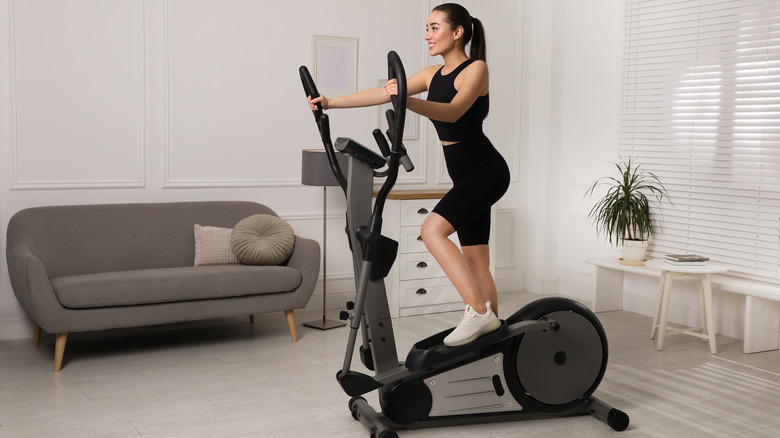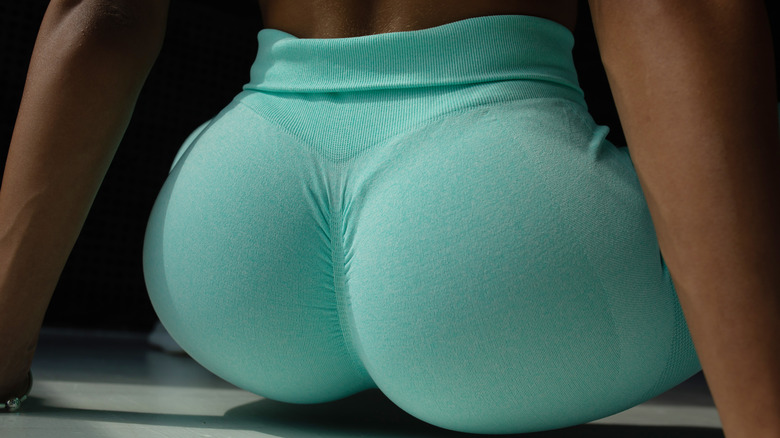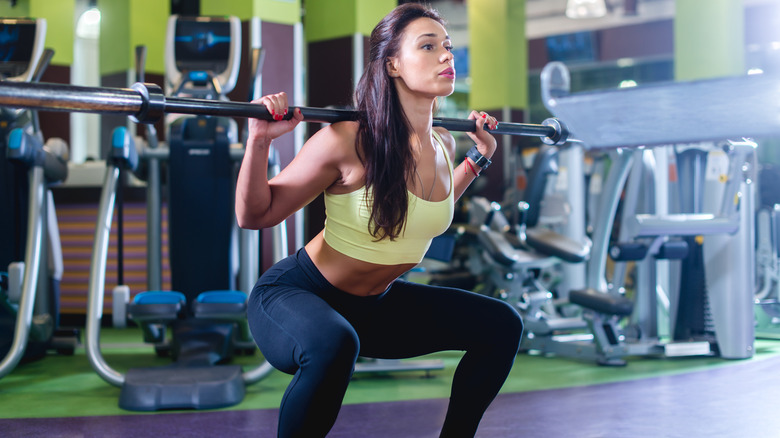Can The Elliptical Tone Your Butt?
Are you spending hours on the elliptical machine, hoping to tone your butt and legs? Unfortunately, it's not that simple. As it turns out, the concept of "toning" is largely a myth. "When we speak of tone, we are talking about our body looking firm (which is a result of an increase in muscle tissue), as well as defined (which is a result of a low enough body fat percentage) where we can see the shape of the muscles and the absence of the jiggle," personal trainer Pete Geracimo told Insider.
Additionally, the elliptical doesn't build mass. While it engages your quads, hamstrings, and other muscle groups, the resistance isn't heavy enough to increase muscle size. However, it offers a full-body workout without putting stress on your joints. Your feet stay on the pedals at all times, which helps reduce the impact on your knees and ankles. Moreover, elliptical trainers are suitable for those recovering from hip or hamstring injuries, says Danielle Clark-Fox, a physical therapist at Boston Sports Medicine.
This versatile gym machine hits nearly every muscle in your body. Plus, you can adjust workout intensity and use your elliptical bike for high-intensity interval training (HIIT), Tabata, and other heart-pumping workouts. If you exercise at a moderate pace, you'll burn about 365 calories per hour, according to the Mayo Clinic. But should you use the elliptical trainer if you're interested in working on your butt? Let's find out.
Elliptical trainers can shape your butt
The elliptical trainer won't "tone" your butt, but it may improve its size and shape. Because it targets the glutes, it can make your buttocks appear rounder and firmer. Personal trainer Meghan Kennihan told Aaptiv that elliptical workouts engage both the upper and lower body. "When your thigh moves backward during the gliding motion, you will feel your glutes and hamstrings. Your quadriceps get worked when your leg is moving forward. The calves and tibialis contract to stabilize the lower legs," explains Kennihan. Your adductors, abductors, arms, shoulders, and core muscles get an intense workout, too.
However, don't expect to get a bigger butt just by using the elliptical machine. The size and shape of your buttocks depend on several factors, including genetics and body type (per WebMD). Elliptical trainers are great for cardiovascular workouts, but they won't do much for your glutes — the muscles that make up the buttocks. The same goes for the treadmill, spinning bike, and other cardio machines. "You need to add in resistance training, too," fitness expert Candice Cunningham told Aaptiv.
Eat and train for your goals
Using an elliptical trainer may not be the best way to build strong glutes, but you can tweak your workout to increase its efficiency. Personal trainer Megahan Kennihan suggests upping the resistance on your elliptical machine to make your muscles work harder (via Aaptiv). You can also increase the incline, go backward, and add intervals to the mix. These strategies will not only improve your endurance but also help you avoid plateaus.
You can combine cardio and strength training to get the best of both worlds. Barbell squats, lunges, deadlifts, and hip extensions all work your glutes and legs, according to physique competitor Fawnia Mondey (via Bodybuilding.com). She also recommends using a stair climber, stepper, or treadmill on a high incline for at least 20 minutes per day, three days a week. As you progress, aim for 30 to 45 minutes, 5-6 times per week.
Note that your diet matters, too. Hypertrophy, or muscle growth, requires an energy surplus, explains the National Academy of Sports Medicine (NASM). Simply put, you need to take in more calories than you burn. Otherwise, your muscles — including the glutes — won't be able to grow and recover from training. The NASM recommends 1.6-2.2 grams of protein per kilogram of body weight per day, as well as a gradual increase in energy intake.



